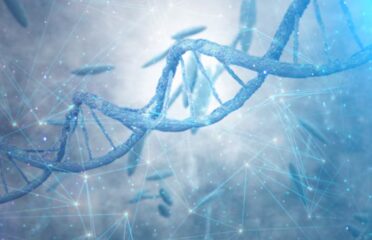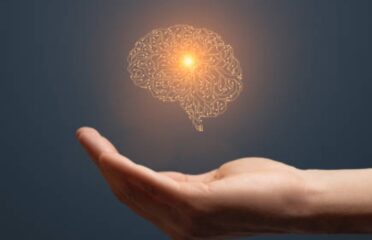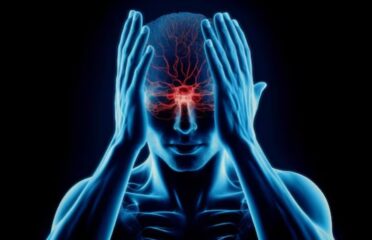Ohtahara Syndrome
Overview

Ohtahara syndrome, a rare variant of epilepsy, manifests with seizures and developmental delays, typically surfacing within the first three months of a newborn's life, often in the initial ten days. The causes can range from brain abnormalities and metabolic disorders to gene mutations, though some cases lack identifiable origins. Early detection is vital due to the syndrome's onset during infancy. Diagnosis hinges on recognizing distinct seizure patterns and utilizing advanced medical imaging to explore potential causative factors. Tailored treatment plans may include antiepileptic medications and supportive therapies to manage the condition's impact on neurological development. A comprehensive understanding and early intervention are pivotal in addressing the complexities of Ohtahara syndrome and optimizing outcomes for affected individuals.
Symptoms
Ohtahara syndrome in children manifests primarily through seizures and developmental delays.
Seizures in Ohtahara syndrome are often severe, frequent, and resistant to treatment, impacting the child's neurological health.
These seizures typically emerge within the first few months of life, making early diagnosis crucial for intervention and management.
Developmental delays encompass various aspects, such as motor skills, language acquisition, and cognitive functions, creating unique challenges for affected children.
The combination of persistent seizures and developmental delays necessitates a multidisciplinary approach involving neurologists, pediatricians, and developmental specialists.
Ongoing research aims to enhance understanding and treatment strategies for Ohtahara syndrome, seeking to improve the quality of life for affected children and support their families.
Causes & Risks
Ohtahara syndrome can arise from diverse causes, primarily categorized into distinct factors:
-Brain Malformations: Abnormal brain development constitutes a significant cause, with variations in severity. Most infants exhibit diffuse abnormalities affecting both brain hemispheres. At the same time, some may have less common focal abnormalities concentrated in specific areas.
-Genetic Mutations: OS can be attributed to genetic mutations, impacting brain development or function. Genetic differences contribute to the manifestation of the syndrome.
-Metabolic Disorders: Another contributing factor is metabolic disorders, which influence the body and brain's energy utilization. These disorders disrupt normal brain function, potentially leading to abnormal brain activity and seizures.
Understanding these multifaceted causes is crucial for effective diagnosis and targeted management of Ohtahara syndrome.
Test & Diagnosis
Diagnosis often involves a comprehensive clinical examination, emphasizing the importance of patient history.
This assessment helps identify critical signs and symptoms of Ohtahara syndrome, with particular attention to any seizures experienced.
Electroencephalogram (EEG) or Long-term Video EEG Monitoring (LTM): The pivotal diagnostic tool for Ohtahara syndrome is EEG or long-term video EEG monitoring. EEG recordings reveal distinctive patterns, notably the characteristic ""burst suppression.""
This pattern consists of alternating phases of high-voltage abnormal brain activity (bursts) and minimal brain activity (suppression) periods.
Diagnosing Ohtahara syndrome relies on clinical evaluation and specialized tests, providing essential insights for appropriate medical management and support.
Treatment
-Seizure Mitigation Focus: Multiple treatments for Ohtahara syndrome (OS) prioritize seizure management, aiming to enhance overall quality
-Antiepileptic Medications: Various antiepileptic drugs, often in combination, are utilized to manage and diminish the frequency and severity of OS-associated seizures.
-Therapeutic Interventions: Individuals with OS may undergo additional interventions, including ketogenic diets or neurostimulation techniques, complementing the medication-focused approach.
-Tailored Strategies: The complex nature of OS necessitates individualized treatment strategies addressing both underlying causes and specific seizure manifestations.
Regular Monitoring: Continuous evaluation and adjustments to the treatment plan are crucial for optimizing effectiveness and adapting to the evolving needs of individuals with Ohtahara syndrome.
Living With
Ohtahara syndrome necessitates intensive medical care involving neurologists and epilepsy specialists, with continuous monitoring and frequent assessments. Seizures, often severe, are managed using antiepileptic medications, although their efficacy may be limited.
This syndrome significantly impacts a child's development, resulting in severe delays, intellectual challenges, and difficulties in motor skills. Specialized supportive care encompasses assistance in daily activities, nutritional support, and aid for families navigating the challenges of Ohtahara syndrome. Therapies, including occupational, physical, and speech therapy, are vital in optimizing functional abilities. Some individuals may require medical equipment such as feeding tubes or respiratory support enhancing overall quality of life while managing the complexities of Ohtahara syndrome.
Complications
Ohtahara syndrome presents a myriad of challenges, including severe and frequent seizures resistant to medication management, elevating the risk of prolonged seizures known as status epilepticus.
Children affected often encounter substantial developmental delays, manifesting as motor and cognitive impairments, contributing to profound intellectual disabilities.
The syndrome imposes physical limitations, inducing muscle stiffness (spasticity) that hinders movement, coordination, and muscle control.
Moreover, growth and nutritional challenges arise from difficulties in sucking, swallowing, or chewing, leading to delayed growth and nutritional deficiencies.
Respiratory problems such as breathing difficulties, apnea, and respiratory infections emerge due to impaired muscle control and respiratory function, adding further complexity to the condition.





